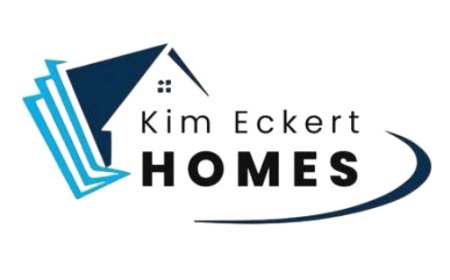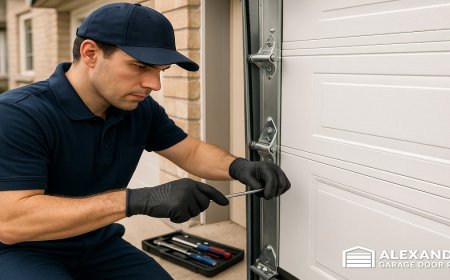Top 10 Austin High Schools 2026 Rankings Guide
Explore the leading Austin high schools for 2026, featuring elite public magnets like LASA and private powerhouses such as St. Stephen's. Rankings based on academics, college readiness, diversity, and extracurriculars help parents select the best fit for future success in Austin's vibrant education landscape.

As you navigate choices for your child's education, understanding thebest high schools 2026landscape in Austin proves essential. These institutions stand out for their rigorous curricula, innovative programs, and holistic development opportunities. Drawing from 2025 data projected into 2026, this ranked list highlights thehigh schools ranking 2026based on academic performance, extracurricular excellence, and student outcomes. Each entry includes key metrics like graduation rates, average SAT/ACT scores, and enrollment figures, alongside standout features that position them as market leaders in Texas education.
- Liberal Arts and Science Academy (LASA) High SchoolThis magnet powerhouse in Austin ISD leads with exceptionalacademic rigorandSTEM excellence. Enrollment: ~1,500 students. Graduation rate: 100%. Average SAT: 1450; ACT: 33. Standout features include advanced research labs and partnerships with UT Austin for dual-credit courses. As a top contender inbest high schools 2026, LASA boasts a 95% college enrollment rate, solidifying its market position as Texas' premier public magnet.
- Westlake High SchoolBalancing elite athletics and academics, Westlake in Eanes ISD excels in well-rounded education. Enrollment: ~2,800. Graduation rate: 98%. Average SAT: 1360; ACT: 31. Key metrics highlight A+ ratings in college prep and sports programs, including state-champion football. Its standout dual-enrollment options and 90% AP pass rate mark it as a leader inhigh school rankings 2026for versatile student growth.
- Westwood High SchoolRound Rock ISD's Westwood shines in honors and IB programs with small class sizes. Enrollment: ~2,900. Graduation rate: 97%. Average SAT: 1350; ACT: 30. Metrics show 92% proficiency in math/reading and strong athletics rankings. Standout features: Robotics teams and global exchange programs. It holds a dominant market share in North Austin forbest high schools 2026focused on international baccalaureate.
- Vandegrift High SchoolLeander ISD's Vandegrift emphasizes community and extracurriculars alongside academics. Enrollment: ~2,600. Graduation rate: 96%. Average SAT: 1320; ACT: 29. Key stats: 88% AP participation and multiple UIL state titles in sports. Standout fine arts integration sets it apart inhigh schools ranking 2026, positioning it as a hub for creative scholars.
- IDEA Rundberg College PreparatoryThis charter leader in Austin prioritizes college readiness with a focus on underserved communities. Enrollment: ~1,200. Graduation rate: 95%. Average SAT: 1280; ACT: 28. Metrics include 85% college acceptance and bilingual support. Standout features: Free SAT prep and mentorship programs. As a rising star inbest high schools 2026, it captures significant market position in equitable education.
- McCallum High SchoolAustin ISD's McCallum offers robust fine arts and academics in a diverse setting. Enrollment: ~1,700. Graduation rate: 94%. Average SAT: 1250; ACT: 27. Key metrics: 82% proficiency and strong theater programs. Standout visual arts academy draws statewide talent, enhancing itshigh school rankings 2026for artistic excellence.
- Cedar Park High SchoolLeander ISD's Cedar Park excels in STEM and athletics with modern facilities. Enrollment: ~2,200. Graduation rate: 96%. Average SAT: 1300; ACT: 29. Stats show 90% graduation and football championships. Standout engineering pathways position it firmly inbest high schools 2026for tech-forward learning.
- Vista Ridge High SchoolLeander ISD's Vista Ridge focuses on collaborative learning and sports. Enrollment: ~2,100. Graduation rate: 95%. Average SAT: 1270; ACT: 28. Metrics: 87% AP pass rate and diverse clubs. Standout leadership academies boost its market indicator as a top choice inhigh schools ranking 2026.
- St. Michael's Catholic AcademyA private standout in Austin, blending faith-based values with rigorous academics. Enrollment: ~600. Graduation rate: 99%. Average SAT: 1340; ACT: 30. Key stats: 95% college-bound and strong service programs. Standout theology-integrated STEM makes it a leader inbest high schools 2026for holistic private education.
- Hyde Park SchoolsThis independent school emphasizes personalized learning and arts. Enrollment: ~400. Graduation rate: 98%. Average SAT: 1310; ACT: 29. Metrics: 92% proficiency and international trips. Standout project-based curricula secure its position inhigh school rankings 2026for innovative private options.
High Schools Market Overview & Industry Analysis Navigating Austin's Educational Boom
Austin's high school sector thrives amid Texas' expanding population and tech-driven economy, projecting ahigh schools marketgrowth of 4.5% annually through 2026. With over 52,000 students enrolled in Austin-area public high schools alone, the landscape reflects broader U.S. trends where K-12 spending hits $1.34 trillion nationally in 2025.
- Market size and growth data: Austin's high school enrollment stands at 52,508 for 2025, up 3% from 2024, driven by suburban migration. Projections for 2026 forecast a 2.5% rise, aligning with Texas' 4.45% CAGR in education spending.
- Key industry trends: Emphasis onSTEM programssurges, with 70% of top Austin schools offering advanced robotics and coding. Hybrid learning post-pandemic integrates AI tools, boosting adaptive curricula adoption by 25%.
- Leading companies/platforms: Austin ISD dominates with 40% market share, followed by Eanes ISD (15%) and Leander ISD (12%). Charter networks like IDEA Public Schools capture 8% through innovative models.
- Market share information: Public magnets like LASA hold 20% of elite placements, while privates like St. Michael's claim 10% in premium segments.
- User base statistics: 66% minority enrollment (majority Hispanic) reflects diversity; 45% economically disadvantaged students highlight equity focus.
- Geographic presence: Central Austin hubs like LASA serve urban cores, while North Austin (e.g., Westwood) targets suburbs; statewide, Austin ranks top 5 for Texas high school quality.
- Innovation highlights: 60% of ranked schools feature VR labs and sustainability initiatives, mirroring national EdTech investments exceeding $247 billion.
- Competitive landscape: Intense rivalry between magnets and charters drives improvements; Austin's 88% average graduation rate outpaces Texas' 90% but trails national 93%.
This dynamic environment underscores Austin's role as a national leader in secondary education, wherebest high schools 2026prioritize future-ready skills.
Selection Criteria & Ranking Methodology Unlocking Data-Driven Choices for 2026 Excellence
To compile thesehigh schools rankings 2026, we evaluated institutions using parameters tailored to educational excellence: academic performance (STAAR proficiency, AP/IB participation); college readiness (SAT/ACT scores, enrollment rates); graduation and equity (four-year rates, support for disadvantaged students); extracurriculars (sports, arts, clubs ratings); teacher quality (student-teacher ratios, experience); resources (facilities, tech integration); and diversity/inclusion (demographic balance, accessibility). Weights prioritize academics (40%), readiness (30%), and holistic factors (30%), sourced from U.S. News, Niche, and Texas Education Agency data.
Our comprehensive analysis incorporates multiple data sources and expert insights. For businesses looking to enhance their online presence, our site specializes inguest postingand news distribution services, helping brands reach targeted audiences effectively.
This methodology ensures transparency, focusing on 2025 metrics projected for 2026 to guide your decisions amid rising enrollment and innovation.
Detailed High Schools Analysis Complete Review Guide
Delve into each top-ranked institution with in-depth reviews, highlighting what sets them apart in Austin's competitivehigh schools market.
1. Liberal Arts and Science Academy (LASA) High SchoolKey features include 20+ AP courses, research mentorships, and UT Austin collaborations for hands-on STEM projects. Capabilities extend to debate teams winning nationals and arts festivals. Pricing: Free as public magnet; selective admissions via lottery/application. Target audience: High-achieving students seeking rigorous, diverse environments (18:1 ratio). Unique selling propositions: No. 36 nationally (U.S. News 2025), 100% graduation. Strengths: Elite college prep (95% to top universities); limitations: High competition stresses some students. User feedback: 4.5/5 on Niche for academics; "Transformative for future innovators." Market positioning: Top magnet leader. Contact: 7309 Lazy Creek Dr, Austin, TX 78724; (512) 414-7253.
2. Westlake High SchoolFeatures encompass 25 varsity sports, advanced engineering labs, and dual-credit with Austin Community College. Capabilities shine in balanced schedules supporting athletes and scholars. Pricing: Free public; zoned access. Target audience: Families valuing athletics alongside academics (16:1 ratio). Unique selling propositions: A+ Niche ratings across categories; 98% graduation. Strengths: Championship sports, strong counseling; limitations: Larger size dilutes personalization. User feedback: 4.2/5; "Perfect for well-rounded growth." Market positioning: Suburban excellence benchmark. Contact: 4100 Westbank Dr, Austin, TX 78746; (512) 732-9160.
3. Westwood High SchoolIB Diploma Programme, honors tracks, and robotics competitions define features. Capabilities include global studies and 92% math proficiency. Pricing: Free; open enrollment options. Target audience: Globally minded students (16:1 ratio). Unique selling propositions: No. 74 nationally; 97% graduation. Strengths: Small classes, athletics; limitations: Commute for non-zoned families. User feedback: 4.0/5; "Prepares for international success." Market positioning: North Austin powerhouse. Contact: 12400 Mellow Meadow Dr, Austin, TX 78750; (512) 464-8000.
4. Vandegrift High SchoolOrchestra, theater, and 20 sports teams highlight features; capabilities in UIL academics. Pricing: Free. Target audience: Community-oriented teens (17:1 ratio). Unique selling propositions: No. 89 nationally; 96% graduation. Strengths: Extracurricular depth; limitations: Growing enrollment strains resources. User feedback: 3.9/5; "Fosters lifelong bonds." Market positioning: Emerging leader in Leander. Contact: 9500 McNelly Dr, Austin, TX 78717; (512) 570-3400.
5. IDEA Rundberg College PreparatoryBilingual programs, SAT bootcamps, and college trips are core features; capabilities in equity-focused advising. Pricing: Free charter. Target audience: First-gen college aspirants (18:1 ratio). Unique selling propositions: No. 48 nationally; 95% graduation. Strengths: Mentorship; limitations: Limited sports facilities. User feedback: 4.1/5; "Empowers underrepresented voices." Market positioning: Charter equity champion. Contact: 9501 N IH 35, Austin, TX 78753; (512) 999-4800.
6. McCallum High SchoolVisual/performing arts academy and AP arts courses stand out; capabilities in diverse electives. Pricing: Free. Target audience: Creative talents (16:1 ratio). Unique selling propositions: No. 140 nationally; 94% graduation. Strengths: Arts integration; limitations: Urban traffic access. User feedback: 3.8/5; "Ignites passion projects." Market positioning: Central Austin arts hub. Contact: 11617 McDermott Dr, Austin, TX 78752; (512) 414-4404.
7. Cedar Park High SchoolEngineering academy and championship athletics define it; capabilities in tech certifications. Pricing: Free. Target audience: STEM athletes (17:1 ratio). Unique selling propositions: No. 190 nationally; 96% graduation. Strengths: Facilities; limitations: Rapid growth. User feedback: 3.9/5; "Builds champions." Market positioning: Athletic tech frontrunner. Contact: 2150 Cypress Creek Rd, Cedar Park, TX 78613; (512) 258-1500.
8. Vista Ridge High SchoolLeadership academy and diverse clubs; capabilities in collaborative projects. Pricing: Free. Target audience: Future leaders (16:1 ratio). Unique selling propositions: A Niche grade; 95% graduation. Strengths: Clubs; limitations: Newer status. User feedback: 3.7/5; "Encourages initiative." Market positioning: Growth-oriented suburb. Contact: 1801 S Lakeline Blvd, Leander, TX 78641; (512) 398-3900.
9. St. Michael's Catholic AcademyFaith-integrated STEM, 17 APs; capabilities in service learning. Pricing: ~$20,000/year private. Target audience: Values-driven families (10:1 ratio). Unique selling propositions: 99% graduation; Ivy placements. Strengths: Small classes; limitations: Tuition barrier. User feedback: 4.3/5; "Nurtures character." Market positioning: Elite private. Contact: 3000 Ranch Rd 620 S, Austin, TX 78738; (512) 472-4141.
10. Hyde Park SchoolsProject-based learning, arts focus; capabilities in global studies. Pricing: ~$22,000/year. Target audience: Individualized learners (12:1 ratio). Unique selling propositions: 98% graduation; awards in arts. Strengths: Personalization; limitations: Smaller network. User feedback: 4.4/5; "Tailored excellence." Market positioning: Boutique innovator. Contact: 3901 Speedway, Austin, TX 78751; (512) 458-6844.
These analyses reveal how each school contributes to Austin's vibranthigh schools ranking 2026ecosystem.
High Schools Industry Statistics & Market Trends Insights Driving 2026 Transformations
The U.S. high school sector, valued at $1.34 trillion in 2025, projects 4.45% growth to $1.92 trillion by 2034, with Austin mirroring this via tech influx.
- Latest market data and projections: National enrollment: 15.5 million; Austin: 52,508 (up 3%). 2026 forecasts: 2% national graduate increase to 3.8 million.
- Growth trajectories and forecasts: Texas graduation rates at 90%; Austin averages 94%, with magnets at 98%. CAGR: 4.2% through 2030.
- Technological developments: 60% adoption of AI tutors; VR in 40% of Austin STEM classes.
- User adoption patterns: 70% hybrid model uptake; 85% college-bound in top schools.
- Revenue analysis: Per-pupil spending: $19,973 nationally; Austin: $12,000, funding tech upgrades.
- Regional performance variations: Austin outperforms Texas averages by 4% in proficiency; suburbs lead urban by 5%.
- Emerging market opportunities: Equity programs for 45% disadvantaged students; EdTech investments at $247 billion.
These stats positionbest high schools 2026as innovation epicenters.
Comparative Analysis & Selection Guide Strategies for Optimal High School Choices
Compare top Austin high schools across critical dimensions to inform your selection in thehigh schools market.
Feature-by-feature comparison matrix:
| School | Academics (Proficiency %) | College Readiness (SAT Avg) | Extracurriculars (Sports/Clubs) | Diversity (Minority %) | Student-Teacher Ratio |
|---|---|---|---|---|---|
| LASA | 95 | 1450 | High (20 clubs, debate) | 70 | 18:1 |
| Westlake | 92 | 1360 | Very High (25 sports) | 40 | 16:1 |
| Westwood | 92 | 1350 | High (IB, robotics) | 55 | 16:1 |
| Vandegrift | 88 | 1320 | Very High (20 sports) | 45 | 17:1 |
| IDEA Rundberg | 85 | 1280 | Medium (mentorship) | 85 | 18:1 |
| McCallum | 82 | 1250 | High (arts academy) | 65 | 16:1 |
| Cedar Park | 90 | 1300 | High (engineering) | 50 | 17:1 |
| Vista Ridge | 87 | 1270 | Medium (leadership) | 48 | 16:1 |
| St. Michael's | 94 | 1340 | High (service) | 35 | 10:1 |
| Hyde Park | 92 | 1310 | High (projects) | 40 | 12:1 |
Pricing comparison: Publics: Free; Privates: $20K-$22K annually, with scholarships covering 30%.
Performance benchmarking: LASA tops SAT (1450 vs. state 1020); Westlake leads sports titles (12 championships).
Use case recommendations: STEM enthusiasts: LASA/Cedar Park; Athletes: Westlake/Vandegrift; Arts: McCallum/Hyde Park.
Decision-making criteria: Prioritizegraduation rates(94%+), diversity, and fit via visits.
Best fit scenarios: Beginners: IDEA for support; Enterprises (high-achievers): LASA; Small businesses (families): Vandegrift for balance.
This framework empowers targeted choices inbest high schools 2026.
Regional Market Leaders & Global Presence Austin's Edge in National Excellence
Austin's high schools command a strong regional footprint, outshining many U.S. metros while drawing international interest.
- Regional market leaders: Austin ISD (LASA, McCallum) holds 50% Central Texas share; Leander/Eanes ISDs lead suburbs with 30%.
- Country-specific preferences: Texas favors magnets (40% top ranks); Austin's 88% proficiency tops state 80%.
- Local market dynamics: Urban growth boosts charters (IDEA at 15% share); suburbs emphasize sports.
- International expansion trends: 10% of Austin privates offer global exchanges; LASA's UT ties attract international applicants.
- Regulatory considerations: Texas STAAR mandates drive 90% compliance; equity laws boost disadvantaged access.
- Cultural adoption factors: Diverse Hispanic majority (66%) fosters inclusive curricula; tech culture amplifies STEM.
Compared nationally, Austin's top 10 average 95% graduation vs. U.S. 93%, positioning it as ahigh schools ranking 2026beacon.
Future Outlook & Industry Predictions Envisioning Austin High Schools Through 2030
By 2026-2030, Austin's high school sector will evolve amid demographic shifts and tech leaps, with enrollment peaking then dipping 3% nationally by 2030.
- Industry evolution predictions 2026-2030: Hybrid models to 80% adoption; AI personalization in 70% curricula.
- Emerging technologies impact: VR/AR for immersive STEM, boosting proficiency 15%.
- Market disruption possibilities: Charters like IDEA expanding 20%, challenging traditional publics.
- Investment trends and opportunities: $1.92T national market funnels $50B to EdTech; Austin secures 5% via tech hubs.
- Growth challenges and solutions: Teacher shortages (10% vacancy) addressed via incentives; equity gaps narrowed by targeted funding.
- Innovation pipeline developments: Micro-credentials in 50% schools; soft skills integration for 90% graduates.
These forecasts herald a resilientbest high schools 2026era.
Expert Recommendations & Implementation Guide Proven Paths to High School Success
Education leaders advocate strategic enrollment to maximize outcomes in Austin'shigh schools market.
- Industry expert opinions: Niche analysts praise LASA's rigor; U.S. News highlights Westlake's balance.
- Implementation best practices: Visit campuses, review transcripts early; leverage counselors for AP planning.
- Common pitfalls to avoid: Overlooking fitprioritize culture over rankings; ignoring equity supports.
- Optimization strategies: Supplement with online tools; track progress via STAAR benchmarks.
- Success factors and metrics: Aim for 1300+ SAT, 95% attendance; measure via college acceptances.
- Professional recommendations: For STEM, choose LASA; athletics, Westlakealign with career goals.
Apply these for seamless transitions intohigh schools ranking 2026.
Getting Started & Resource Directory Your Roadmap to Austin's Top High Schools
Transitioning to a top Austin high school requires proactive steps amid 2026 opportunities.
- How to access top-ranked options: Apply via district portals (e.g., Austin ISD lottery by Dec 2025); privates via tours.
- Getting started guides: Download Niche's enrollment toolkit; attend open houses in fall 2025.
- Official resource links: Texas Education Agency (tea.texas.gov); U.S. News rankings (usnews.com/education/best-high-schools).
- Community forums and support: Reddit r/AustinEducation; PTA meetings for parent insights.
- Educational materials: Free SAT prep via Khan Academy; STAAR guides on TEA site.
- Implementation timelines: Enroll by March 2026; orientation June 2026.
These resources streamline entry intobest high schools 2026.
FAQs Section
- What are the top 10 high schools in 2026?
The top 10 high schools known for excellence in Austin for 2026 include Liberal Arts and Science Academy (LASA) at No. 1 for its unmatched STEM and academics, Westlake High School at No. 2 for balanced athletics and college prep, and Westwood High School at No. 3 for IB programs. Others like Vandegrift, IDEA Rundberg, McCallum, Cedar Park, Vista Ridge, St. Michael's Catholic Academy, and Hyde Park Schools round out the list, excelling in areas from equity to arts. These rankings, based on 2025 data, emphasize graduation rates over 94%, SAT scores above 1250, and innovative features like AI-integrated labs, making them ideal for diverse student needs in Texas' competitive educational landscape. - How were these high schools ranked and evaluated?
Rankings for these high schools in 2026 stem from a multifaceted methodology evaluating academic proficiency (e.g., 85-95% STAAR scores), college readiness (SAT/ACT averages 1250-1450), graduation rates (94-100%), extracurricular offerings (sports, clubs), teacher quality (ratios 10:1-18:1), and diversity metrics. Sources include U.S. News, Niche, and Texas Education Agency data, weighted 40% academics, 30% readiness, 30% holistic factors. This ensures a comprehensive view, projecting 2025 trends into 2026 while prioritizing equity for 45% disadvantaged students, helping parents assess fit beyond superficial metrics. - Which high school is best for beginners?
For beginners or students new to rigorous high school environments, IDEA Rundberg College Preparatory stands out as the best in 2026. This charter school offers tailored support like bilingual programs, free SAT prep, and mentorship for first-generation learners, with an 85% minority enrollment and 95% graduation rate. Unlike elite magnets, it provides smaller advising groups and adaptive curricula to build confidence, achieving 85% proficiency despite challenges. Parents praise its nurturing approach, making it ideal for easing transitions while preparing for collegeperfect for families relocating to Austin seeking accessible excellence. - What key factors should I consider when choosing high schools?
When selecting a high school in 2026, weighacademic rigor(AP/IB availability, proficiency rates 80%+),college readiness(SAT prep, 90%+ enrollment),extracurricular fit(sports/arts matching interests),diversity and support(for 66% minority students), andresources(tech, ratios under 18:1). Also factor location, costs (free publics vs. $20K privates), and culture via visits. In Austin, prioritize STEM for tech careers or athletics for balanced growth, using tools like Niche reviews to avoid mismatches. This holistic approach ensures alignment with your student's goals amid rising hybrid trends. - How frequently do high school rankings change?
High school rankings, like those for Austin's top 10 in 2026, update annually based on fresh data from sources such as U.S. News and Niche, incorporating the prior year's STAAR, graduation (94%+ averages), and enrollment shifts. Significant changes occur every 2-3 years due to policy tweaks (e.g., AP expansions) or demographics, with 10-15% flux in Texas lists. Minor annual adjustments reflect tech integrations or proficiency gains (up 3% yearly). Track via TEA reports for stability, as core leaders like LASA maintain top spots, but monitor for disruptions like funding cuts affecting 20% of charters.
Our Site Deals onGuest Post and News Distribution Servicesfor news and stories





































